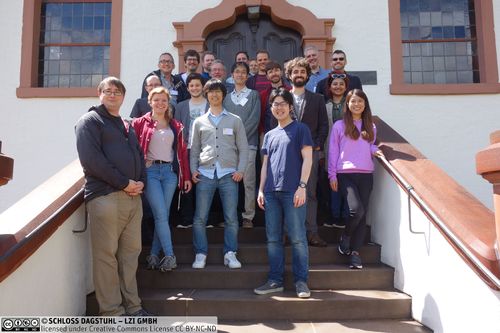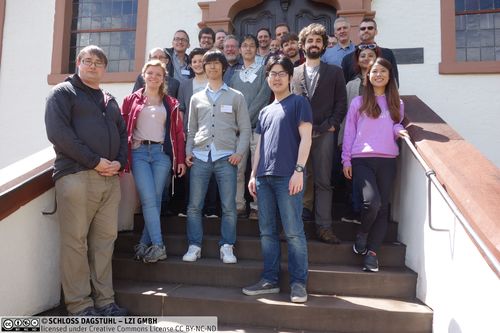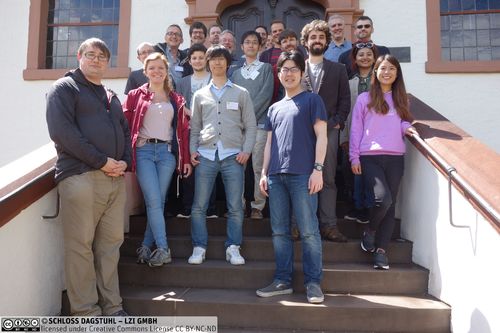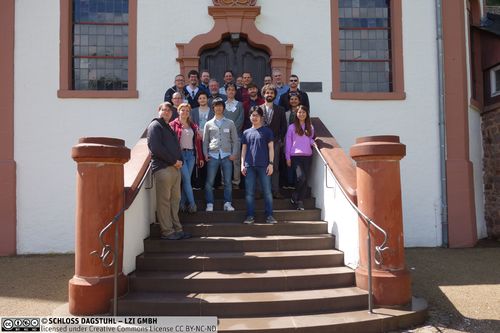Dagstuhl Seminar 17232
Computational Interactivity
( Jun 05 – Jun 08, 2017 )
Permalink
Organizers
- Xiaojun Bi (Stony Brook University, US)
- Otmar Hilliges (ETH Zürich, CH)
- Takeo Igarashi (University of Tokyo, JP)
- Antti Oulasvirta (Aalto University, FI)
Contact
- Annette Beyer (for administrative matters)
Schedule
The field of Human Computer Interaction (HCI) as a whole has been tremendously successful in the past, in terms of growth and impact of the premier academic conferences as well as in reshaping the IT industry. However, as we enter the post-PC era, new technologies emerge and bring along new challenges that the traditional user-centered design approach is not well equipped to meet. For example, artificial intelligence, wearable computing, augmented and virtual reality, and custom interactive devices enabled by emerging digital fabrication technologies pose increasingly substantial challenges for interaction design. Designers must consider the entire stack from low-level hardware through software all the way to the human factors. This implies that it is no longer feasible to disregard technology. Hence, we now have to deal with highly complex design spaces, rendering manual approaches infeasible.
In response to these challenges, researchers have begun to develop computational approaches to HCI problems based on machine learning, optimization, and formal methods. In the past, the domain of HCI was considered too complex to be tractable in traditional computational design settings. However, the scope of problems that can now be solved algorithmically, even on individual PCs, has expanded vastly due to advances in computing power and increased efficiency of numerical solvers. Thus, one goal of this Dagstuhl Seminar is to bring together researchers interested in exploring the algorithmic and computational aspects of HCI and interactive systems and to lay the foundations for new solutions to emerging challenges.
Despite the emergence of, and an increasing need for, computational methods to advance interactive systems for human use, research in this area is fragmented and splintered over a number of communities and forums. Such being the case, it is difficult to synthesize knowledge, to judge the current state-of-the-art, and to cooperate. Another goal of this Dagstuhl Seminar is to bring together researchers from different communities and disciplines, including machine-learning, data-mining, optimization, information retrieval, computer vision, graphics, cognitive and behavioral sciences, and HCI to lay the foundations for a future motor-theme in HCI and interactive system design. The meeting will not only allow for cross-fertilization between the various research directions, but it will also help to bridge gaps between foundational research on these topics and application-driven approaches.
The organizers intend to initiate new research directions for HCI that further establish computational approaches as a prime methodology in the field of HCI. The seminar also seeks to define and crystallize the main research challenges in this emerging area, and to define its current scope in relationship to adjacent fields. The organizers also aim to encourage researchers of relevant areas of computational and behavioural sciences to work directly on HCI problems, to define first viable solutions to score scientific problems in this area, and to provide a convenient point of reference, not only for the latest results, but also for the researchers currently active in this field. The organizers anticipate that the seminar will help in forming a more coherent community and may be the starting point for a future joint conference or symposium that brings together researchers that otherwise associate themselves with disjoint research communities.
This Dagstuhl Seminar will focus on the following topics: (i) machine inference of human behavior, (ii) computational design of interactive systems, and (iii) computational user-modeling.
 Xiaojun Bi, Otmar Hilliges, Takeo Igarashi, and Antti Oulasvirta
Xiaojun Bi, Otmar Hilliges, Takeo Igarashi, and Antti Oulasvirta
The field of Human Computer Interaction (HCI) as a whole has been tremendously successful in the past both in terms of growth and impact of the premier academic conferences and in reshaping the IT industry. However, as we enter the post-PC era new technologies emerge and bring new challenges along that the traditional user-centered-design approach is not well equipped to meet. For example, artificial intelligence, wearable computing, augmented and virtual reality and custom interactive devices enabled by emerging digital fabrication technologies pose increasingly wicked challenges for interaction design, where designers must consider the entire stack from low-level hardware, through software all the way to the human factors, implying that it is no longer feasible to abstract away technology and hence design spaces that explode in their complexity.
In June 2016 we assembled a group of 25 researchers to discuss aspects relating to a computational view of interactions. Through a series of talks, breakout discussions and panel discussions we established a broad consensus that HCI can and should be approached via a computational lense. We also identified several areas in which computational models are already being used to answer HCI research questions and to move the field forward. However, it became clear that the area is in its infancy and that much work is necessary to turn computational HCI into one of the mainstream approaches in the larger research community. Primarily, researchers and students need to begin thinking in computational terms (abstraction, modelling, automation) and need to learn how to incorporate such thinking into the typically more design driven thinking prevalent in current research. Furthermore, it was also discussed at length how state-of-the-art methods in numerical optimization and machine learning can advance HCI research and likewise how HCI research can identify and refine research requirements in these adjacent research communities.
In terms of concrete outcomes, many of the present researchers agreed to contribute to a forthcoming book on “computational interaction” and to write a joint overview article further refining the discussions and outcomes of the Dagstuhl seminar. In summary, a very fruitful and productive seminar led to interesting and in-depth discussions and provided starting points for much collaborative and community-driven future work. We also identified the need for further community building work including establishing of recurring workshops, symposia, and similar outlets, outreach via summer-schools, tutorials and other educational efforts as well as establishment of a sub-committee at ACM SIGCHI the premier venue for HCI research.
 Xiaojun Bi, Otmar Hilliges, Takeo Igarashi, and Antti Oulasvirta
Xiaojun Bi, Otmar Hilliges, Takeo Igarashi, and Antti Oulasvirta
- Emre Aksan (ETH Zürich, CH) [dblp]
- Leif Azzopardi (University of Strathclyde - Glasgow, GB) [dblp]
- Nikola Banovic (Carnegie Mellon University - Pittsburgh, US) [dblp]
- Anna Maria Feit (Aalto University, FI) [dblp]
- Krzysztof Gajos (Harvard University, US) [dblp]
- Otmar Hilliges (ETH Zürich, CH) [dblp]
- Andrew Howes (University of Birmingham, GB) [dblp]
- Takeo Igarashi (University of Tokyo, JP) [dblp]
- Alec Jacobson (University of Toronto, CA) [dblp]
- Andreas Karrenbauer (MPI für Informatik - Saarbrücken, DE) [dblp]
- Jun Kato (AIST - Ibaraki, JP) [dblp]
- Yuki Koyama (AIST - Ibaraki, JP) [dblp]
- Per Ola Kristensson (University of Cambridge, GB) [dblp]
- Ranjitha Kumar (University of Illinois - Urbana-Champaign, US) [dblp]
- Wanyu Liu (ENST - Paris, FR) [dblp]
- Roderick Murray-Smith (University of Glasgow, GB) [dblp]
- Antti Oulasvirta (Aalto University, FI) [dblp]
- Daniele Panozzo (New York University, US) [dblp]
- Jürgen Steimle (Universität des Saarlandes, DE) [dblp]
- Jerry Talton (Slack Technologies - New York, US) [dblp]
- Harold Thimbleby (Swansea University, GB) [dblp]
- John Williamson (University of Glasgow, GB) [dblp]
Related Seminars
- Dagstuhl Seminar 22102: Computational Models of Human-Automated Vehicle Interaction (2022-03-06 - 2022-03-11) (Details)
Classification
- computer graphics / computer vision
- modelling / simulation
- society / human-computer interaction
Keywords
- HCI
- graphics
- machine learning
- optimization
- simulation
- crowd-computing





 Creative Commons BY 3.0 DE
Creative Commons BY 3.0 DE
